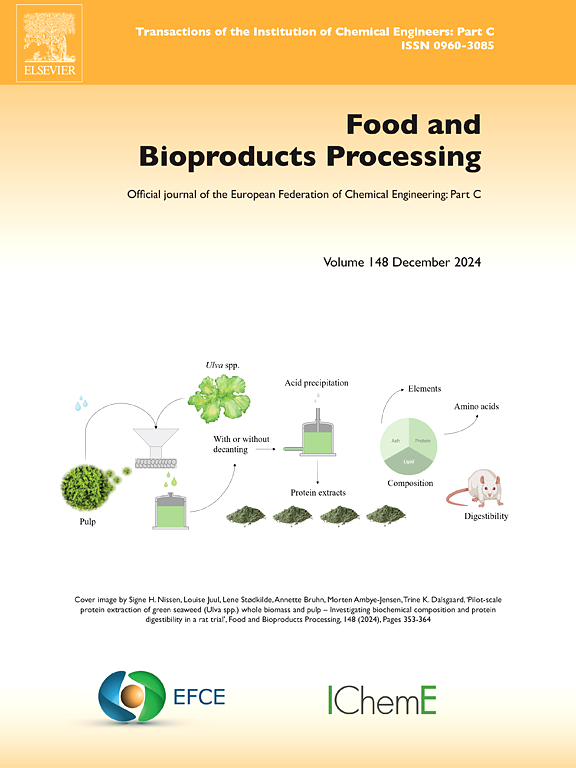Thermal pathways for sustainable waste management: Leveraging leather tannery waste as a renewable energy source
IF 3.5
2区 农林科学
Q2 BIOTECHNOLOGY & APPLIED MICROBIOLOGY
引用次数: 0
Abstract
The growing production of consumer goods increases waste generation, challenging disposal systems. The aim of the work was to use real data to propose a closed loop leather production process, so as to eliminate storage and use the potential of thermal processes for energy recovery. Such actions allow for improving the company's economic balance, but above all for a positive environmental impact. The tanning industry generates about 825 kg of waste per 175 kg of finished leather, mostly landfilled at high costs of utilization. This study examines energy recovery from tannery waste in various path: combustion, pyrolysis, and gasification using data from a Polish tannery.
Results
show combustion has the highest energy yield (94 %), followed by gasification (75 %) and pyrolysis (43 %). The technological process was analyzed and the potential of the by-products generated was quantified. Offcuts offer the highest energy recovery potential, while tannery sludge is the largest waste mass. Energy-intensive processes such as TAIC, dyeing, and cutting require significant power, with offcuts and shaving waste demanding 66.9 kWel and 31.3 kWel, respectively. Thermal energy from incineration meets heating needs and supports waste drying, while waste heat in an Organic Rankine Cycle (ORC) covers 40 % of electricity demand.
This research highlights the benefits of shifting from landfill disposal to sustainable waste management, reducing costs and environmental impact. The proposed calculations demonstrating how engineering can enhance sustainability in the leather industry and others.
可持续废物管理的热能途径:利用制革废料作为可再生能源
消费品生产的不断增长增加了废物的产生,给处理系统带来了挑战。这项工作的目的是利用真实数据,提出一种闭环皮革生产工艺,以消除储存,并利用热工艺回收能源的潜力。这样做可以改善公司的经济平衡,但最重要的是对环境产生积极影响。制革业每生产 175 千克成品革会产生约 825 千克废物,大部分被填埋,利用成本高昂。本研究利用波兰一家制革厂的数据,研究了从制革废料中回收能源的各种途径:燃烧、热解和气化。结果表明,燃烧的能源产量最高(94%),其次是气化(75%)和热解(43%)。对技术过程进行了分析,并对产生的副产品的潜力进行了量化。副产品的能源回收潜力最大,而制革污泥则是最大的废物。TAIC、染色和切割等能源密集型工艺需要大量电力,下脚料和刨光废料分别需要 66.9 千瓦时和 31.3 千瓦时。焚烧产生的热能可满足加热需求并支持废物干燥,而有机郎肯循环(ORC)中的废热可满足 40% 的电力需求。这项研究强调了从垃圾填埋处理转向可持续废物管理的好处,降低了成本并减少了对环境的影响。所提出的计算方法展示了工程技术如何提高皮革业和其他行业的可持续性。
本文章由计算机程序翻译,如有差异,请以英文原文为准。
求助全文
约1分钟内获得全文
求助全文
来源期刊

Food and Bioproducts Processing
工程技术-工程:化工
CiteScore
9.70
自引率
4.30%
发文量
115
审稿时长
24 days
期刊介绍:
Official Journal of the European Federation of Chemical Engineering:
Part C
FBP aims to be the principal international journal for publication of high quality, original papers in the branches of engineering and science dedicated to the safe processing of biological products. It is the only journal to exploit the synergy between biotechnology, bioprocessing and food engineering.
Papers showing how research results can be used in engineering design, and accounts of experimental or theoretical research work bringing new perspectives to established principles, highlighting unsolved problems or indicating directions for future research, are particularly welcome. Contributions that deal with new developments in equipment or processes and that can be given quantitative expression are encouraged. The journal is especially interested in papers that extend the boundaries of food and bioproducts processing.
The journal has a strong emphasis on the interface between engineering and food or bioproducts. Papers that are not likely to be published are those:
• Primarily concerned with food formulation
• That use experimental design techniques to obtain response surfaces but gain little insight from them
• That are empirical and ignore established mechanistic models, e.g., empirical drying curves
• That are primarily concerned about sensory evaluation and colour
• Concern the extraction, encapsulation and/or antioxidant activity of a specific biological material without providing insight that could be applied to a similar but different material,
• Containing only chemical analyses of biological materials.
 求助内容:
求助内容: 应助结果提醒方式:
应助结果提醒方式:


